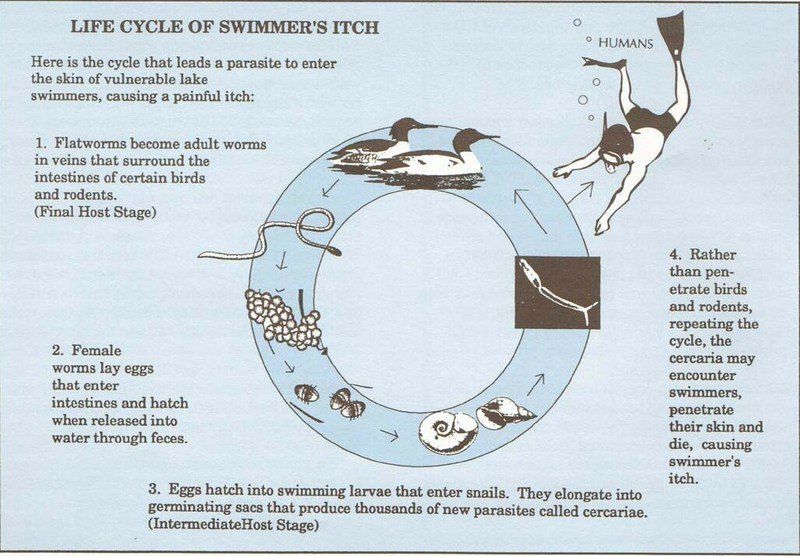
A recent article in the Traverse City Record Eagle April 1 mentions our watershed biologist, Rob Karner, and his insight on a new DNR permit targeting the common merganser duck. The goal of the permit, which allows for the killing or relocation of the ducks, is to reduce the occurrence of Swimmer’s Itch. The duck is the main host for the tapeworm that starts the cycle of swimmer’s itch
Read the full article here:
Karner, as well as most lake association presidents, doesn’t plan on killing the ducks, choosing instead to relocate them.
The following except is from the April 1 Record Eagle article.
“Rob Karner, a watershed biologist with the Glen Lake Association, said it’s much more effective to trap and relocate the ducks. Under the DNR permit there is a limit to how many can be killed in the off season.
“If you have a permit to shoot 25 ducks and there are 100 or more, the cycle continues,” Karner said.
Live trapping has no limit.
“That really has a larger impact on breaking the life cycle,” he said.
While some people think that all mergansers are to blame, only about half of them are infected, Karner said. Most of them are young birds, as the older ones have developed an immunity, he said.”
Read the full article here.
“The state requires that only licensed contractors do the trapping and relocating. The birds can also only be relocated to DNR-approved public areas where there are no snails in the waters. They also have to be sites where mergansers have been spotted and can survive.
Two such places are in Suttons Bay and on Lake Huron, Wynne said.
Karner said he’s glad the science has finally caught up to the application.
“We’ve bridged the gap between pure research and applied science,” he said.
Recent Comments